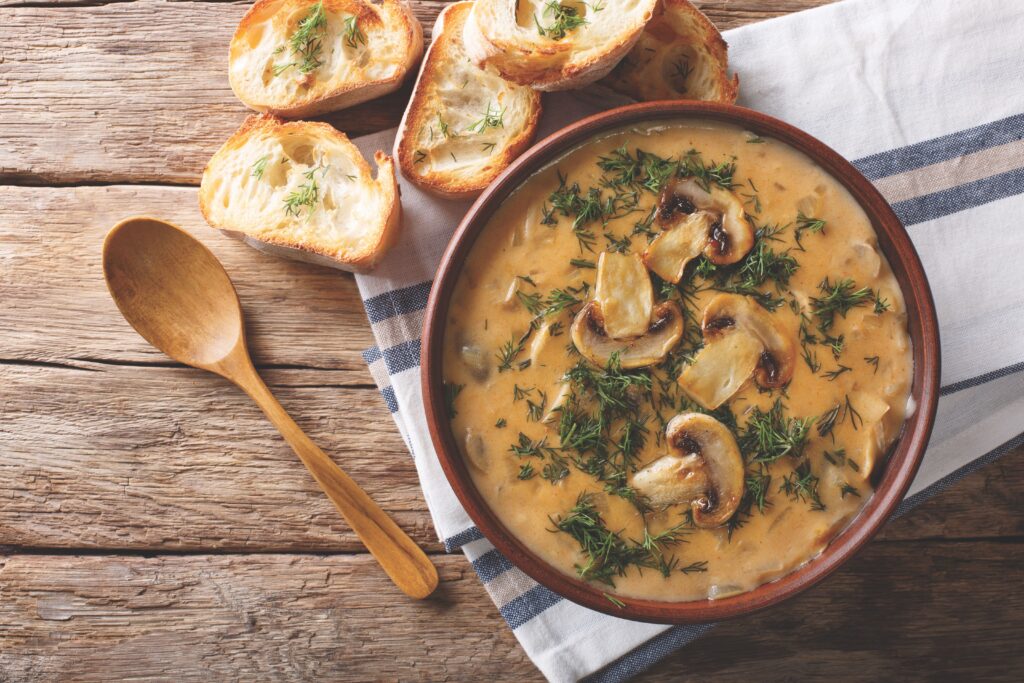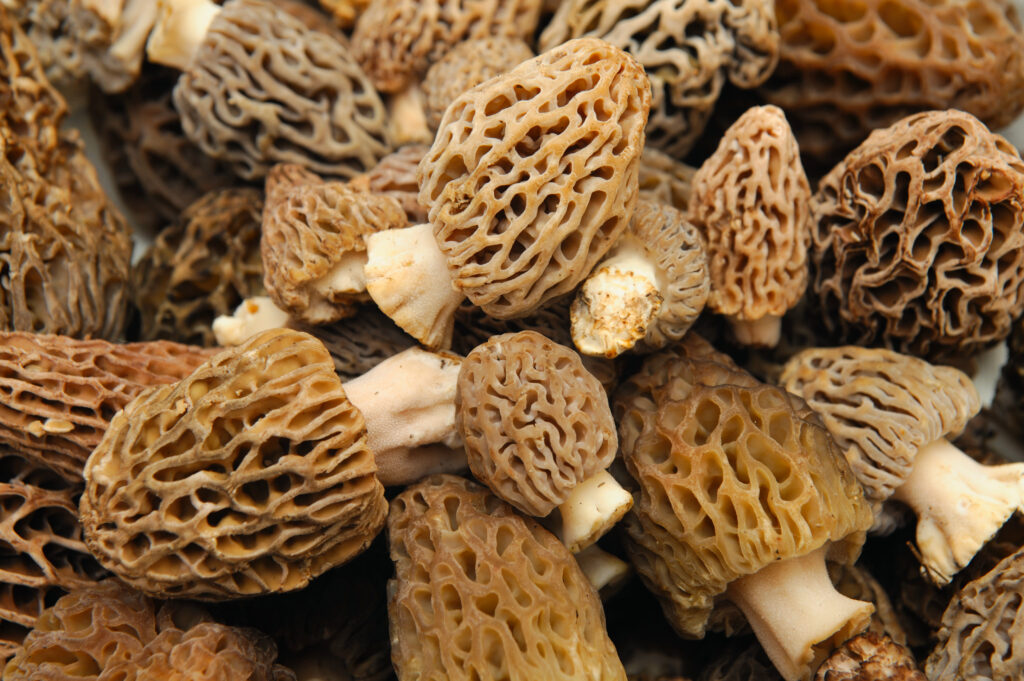Whether you’re a master of mycology or simply love ‘em atop your pizza, mushroom foraging can be a fun and rewarding pastime. Wild mushrooms are plentiful in the Black Hills, but finding them takes patience — and proper identification is crucial.
Native Species
In western South Dakota, morels (genus Morchella) are the undisputed kings of the mushroom world. They grow abundantly in the ponderosa pine forests of the Black Hills, particularly in shady areas, and are easily identifiable based on their distinctive honeycomb-like appearance. Their caps are often oblong in shape, though some are more rounded, and they are hollow inside. They range in color from blonde to gray. Their earthy, nutty flavor and meaty texture are considered a highly sought-after delicacy by cooks worldwide. Unlike many other species, morels cannot be cultivated; they only grow in the wild. This adds to their mystique — not to mention their price tag! Because they prefer warm and wet weather, morels are usually found in the springtime, between March and May. With snow often lingering well into the season, it isn’t unusual to find them as late as Memorial Day.
The king bolete (Boletus edulis) is another mushroom commonly found in the Black Hills. Its large, reddish-brown convex cap resembles a flying saucer. Rather than gills found on so many other species, the king bolete has tiny tubes protruding from the underside of the cap. These act as a conduit for spores when the mushroom reaches maturity. The cap is attached to a thick, clubbed stem. Boletes form a symbiotic relationship with tree roots and thrive in the region’s pine forests. Low in fat, high in protein, and deliciously meaty, king boletes are prized by chefs. Known commercially as porcini mushrooms, they are a popular addition to soups, pasta, and risotto. They are considered one of the safer mushrooms to pick wild, as few dangerous species resemble the king bolete. You’re most likely to find them during the summer months.
Other mushrooms you’ll find in the Black Hills include oysters (Pleurotus ostreatus), which often grow in clusters on trees and can be identified by their broad, oyster- or fan-shaped caps; chanterelles (Cantharellus), yellowish funnel-shaped mushrooms with forked ridges beneath the caps and a fruity aroma; and shaggy manes (Coprinus comatus), with white bell-shaped caps covered in scales.
When in Doubt, Throw Them Out
While mushroom hunting is fun, precautions are necessary. Many species are poisonous and can cause reactions ranging from gastrointestinal distress to coma or death. Often, they closely resemble other harmless species. The false morel is an excellent example: its appearance is very similar to the true morel, but it’s toxic and should never be consumed.
It’s extremely important to enlist the aid of an experienced mushroom forager, at least when starting out. Consult field guides such as Audrey Gabel & Elaine Ebbert’s Mushrooms and Other Fungi of the Black Hills and never eat a wild mushroom unless you are 100% certain you’ve identified it correctly. If you’re even slightly doubtful, toss them out.
A Fun Family Recipe
Mushrooms aren’t only delicious; they’re nutritious, too! They contain antioxidants to help boost the immune system and are an excellent source of Vitamin D. Use those mushrooms you collected (or grew) in this tasty recipe sure to be a hit with your kids!
Cream of Mushroom Soup

Ingredients:
- 5 cups of mushrooms
- 1-2 onions, finely chopped
- 6 cloves of garlic, finely chopped
- 2 tbsp flour
- 3 tsp salt
- 2 tbsp butter
- 1 tsp black pepper
- 1/4 to 3/4 cups whole milk
- Freshly grated cheese
Preparation:
Rinse mushrooms and remove the stems. Heat butter in a saucepan and sauté chopped onions and garlic for two minutes. Add the mushrooms and flour and cook until the water evaporates, approximately 3-4 minutes. Add whole milk, pepper, and salt and bring to a boil over medium heat, cooking until the cream thickens. Top with grated cheese, mix well, and cook for another two minutes. Serve hot and top with oyster crackers if desired.
WORDS: MARK PETRUSKA

